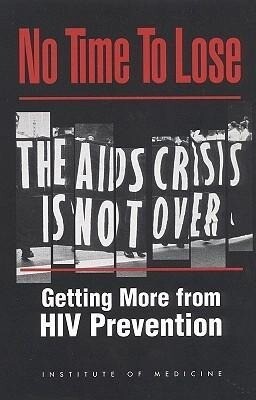
Zustellung: Fr, 01.08. - Do, 07.08.
Versand in 3-4 Wochen
VersandkostenfreiIn the 1980s such terms as AIDS, HIV, and T-cell counts became part of a new medical vocabulary that were made familiar to the public through headlines and sound bites. When words like epidemic began to be used, the mere mention of the disease was enough to frighten people.Fueled by the desire to control this emerging epidemic, the United States focused enormous energies on preventing the spread of AIDS. Although scientific research has not yet produced a cure for HIV infection, we have seen dramatic advances in treatment therapies. Yet the success of these therapies has also produced a newfound complacency that has undermined the effectiveness of today's prevention efforts.The United States has spent two productive decades implementing a variety of prevention programs. While these efforts have slowed the rate of infection, challenges remain. The United States must refocus its efforts to contain the spread of HIV and AIDS in a way that would prevent as many new HIV infections as possible. No Time to Lose presents the Institute of Medicine's framework for a national prevention strategy.
Inhaltsverzeichnis
Introduction - rethinking HIV prevention. Tracking the epidemic: national AIDS surveillance system; rationale for a national system of HIV surveillance; HIV case reporting; population-based HIV incidence estimation. Allocating resources: current allocation of federal HIV prevention funds; assessing the cost-effectiveness of HIV prevention interventions - protecting the blood supply, preventing perinatal transmission of HIV, implementing needle exchange programs; using epidemic impact as a measure of success; a strategic vision for HIV prevention investments; resource allocation for HIV prevention allocating resources at the community level, allocating resources at the national level; support for state and local resource allocation. Using the clinical setting: clinical care-based prevention; programs that provide clinical care to HIV-infected persons - financing of HIV care; changes needed to encourage HIV prevention: Medicaid and Ryan White - care act programs; financing options for Medicaid coverage; encouraging HIV prevention in CARE act programs; DHHS-wide policies to encourage integration of prevention into clinical care. Translating research into action: current efforts in prevention technology transfer; barriers to effective technology transfer at the community level; opportunities for improving prevention technology transfer. Searching for new tools: promising new tools - rapid testing methods for detecting HIV antibodies, alternative barrier methods, antiretroviral therapies, vaccines; promising new collaborations. Overcoming social barriers: social barriers - poverty, racism, and gender inequality, the sexual "code of silence", stigma of HIV/AIDS, misperceptions, lack of leadership; unrealized opportunities - access to drug treatment and sterile injection equipment, comprehensive sex education and condom availability in schools. Appendices: the changing epidemic; the prevention portfolio: intervention to prevent; HIV infection; federal spending on HIV/AIDS; description and mathematical statement of the HIV prevention; resource allocation model; data gathering activities; agendas for public committee meetings.
Produktdetails
Erscheinungsdatum
02. März 2001
Sprache
englisch
Seitenanzahl
253
Autor/Autorin
Institute of Medicine, Division of Health Promotion and Disease Prevention, Committee on Hiv Prevention Strategies in the United States
Herausgegeben von
James Trussell, Harvey V Fineberg, Michael A Stoto, Edward H Kaplan, Alicia R Gable, Monica S Ruiz
Verlag/Hersteller
Produktart
gebunden
Gewicht
581 g
Größe (L/B/H)
236/159/22 mm
ISBN
9780309071376
Bewertungen
0 Bewertungen
Es wurden noch keine Bewertungen abgegeben. Schreiben Sie die erste Bewertung zu "No Time to Lose" und helfen Sie damit anderen bei der Kaufentscheidung.







